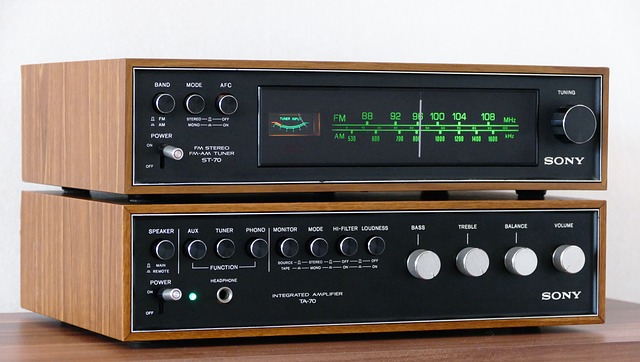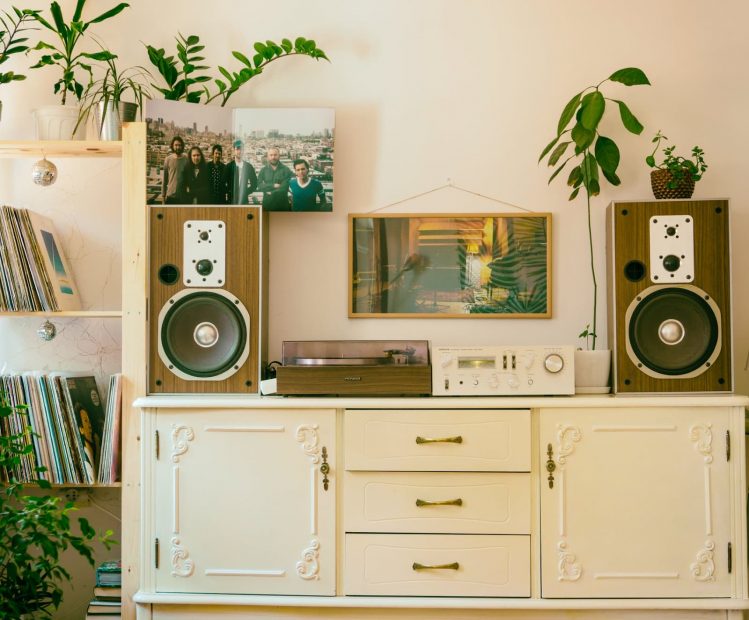How to Set Up a Home Hi-Fi System
There are numerous options for setting up a Hi-Fi system. Depending on your preferences and budget, you can install a single speaker or make an 11.2.2 surround system. The actual components can vary, but the basic concepts for achieving high-quality home audio remain consistent across all systems:
- quality hardware
- safety
- room for upgrade
Quality components will allow you to get the most out of the sound while also ensuring the ease of use of your Hi-Fi system. However, it is critical that the components complement each other because your system is only as good as its weakest link. For example, purchasing the best receiver for a turntable can only minimally increase your sound if all other components are of the cheap type of audio equipment. Still, if you upgrade the turntable and speakers as well, you’ll get a much clearer and more powerful sound.
By adhering to safety guidelines, you will be able to protect your equipment as well as your home’s electric systems. Physical safety should also be considered. Cables, for example, running through an area where you frequently walk, can be an issue. Fix those issues beforehand.
Even if you’re satisfied with your current Hi-Fi system, you may like to upgrade it in the future. As a result, it’s a good idea to select components that have a little more power, ports, or other features than you require. Assuming you’re willing to pay for it.
Now that the basics are settled let’s check the steps for setting up a Hi-Fi system in your home.
Make a List of Components

First, decide how many speakers you’ll need and what your source will be. A good Hi-Fi system can be built with as little as two speakers and a quality turntable or a stereo. A receiver is another component improving the coordination between the system components that lets you manage the whole system with a single remote or even your smartphone. Don’t forget to include safety equipment such as a power controller if you plan to use them.
For each device, you’ll need a cable to connect it to the rest of the system. While some modern Hi-Fi systems can exchange the signals entirely through wireless protocols, the audiophiles usually prefer the cable connection. The latter is more stable and enables the least compression of the signal during transmission.
Draw a Plan
When you’ve determined how many components your system will require, it’s time to appropriately arrange them. Take the following elements into consideration:
- number and layout of outlets
- space and traffic in the room
- ventilation space for each component
- acoustic specifics of the room
- position of the listener
If you don’t have enough outlets for all your devices, extension cords can be a solution. However, ensure that the signal path isn’t too long. Otherwise, even a cable with a small gauge can lose some data on the way. Check the cable gauges that are optimal for sound systems.
When planning, make sure that the audio equipment does not obstruct ordinary traffic in your room. Otherwise, you and other people in your household can bump into speakers, receivers, and other electronic devices.
Check that each piece of your audio equipment has enough space around it. Overheating can cause damage and even fire, so it’s better not to put any of the components inside the cabinet.
When you arrange the system components, make a soundcheck. It might turn out that the layout has to be tweaked. To achieve a surround sound effect, the front speaker should be placed farther away, while the side speakers should be placed closer together or tilted back.
Connect the Components
When you’ve done arranging all of your components, it’s time to hook them up. Check if you have all the cables needed. For some connections, you may need an adapter. If your system is equipped with the wireless protocol, you can use it as well. Ensure that the bandwidth and the type of protocol of your wireless devices are compatible.
The optimal connection scheme includes a receiver that serves as a hub for all other components. It connects speakers, a turntable, a digital player, or a TV set (if any). The receiver should have sufficient power and Ohms to power your speakers. It connects to a power surge protector/power conditioner. If your speakers are active, they should also be plugged into a conditioner. The conditioner then connects to the wall outlet.
After you’ve connected all of your components, switch them on and see if everything works. Connect the receiver to your smartphone and play some music. Check if you hear the sound from all speakers that are connected. To get a clean stereo or surround sound, you may need to calibrate the system.

